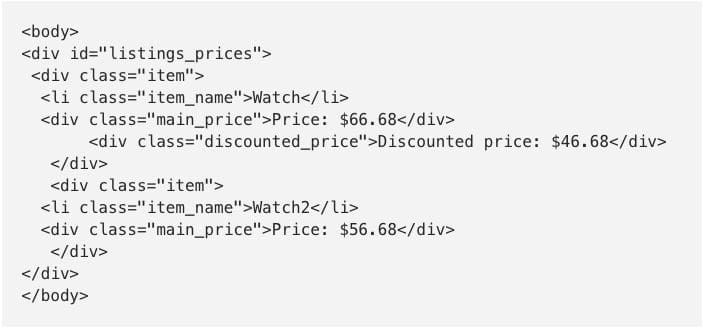Python makes it simple to grab data from the web. This is a guide (or maybe cheat sheet) on how you can scrape the web easily with Requests and Beautiful Soup 4.
Getting started
Here’s where all the information we want is stored. We just have to grab it. We’ll scrape the quote itself, that is in a span tag with class “text”; the author, that’s in a small tag with class “author”; and the tags that are in several a tags with class “tag” inside a div tag with class “tags”.
First, you need to install the right tools.
These are the ones we will use for the scraping. Create a new python file and import them at the top of your file.
Fetch with Requests
The Requests library will be used to fetch the pages. To make a GET request, you simply use the GET method.
TL;DR For examples of scraping javascript web pages in python you can find the complete code as covered in this tutorial over on GitHub. Update November 7th 201 9: Please note, the html structure of the webpage being scraped may be updated over time and this article initially reflected the structure at the time of publication in November 2018. With Python's requests (pip install requests) library we're getting a web page by using get on the URL. The response r contains many things, but using r.content will give us the HTML. Once we have the HTML we can then parse it for the data we're interested in analyzing. There's an interesting website called AllSides that has a media bias rating table where users can agree or disagree with. Conclusion: Web Scraping Python is an essential Skill to have. Today, more than ever, companies are working with huge amounts of data. Learning how to scrape data in Python web scraping projects will take you a long way. In this tutorial, you learn Python web scraping with beautiful soup.

You can get a lot of information from the request.
To be able to scrape your page, you need to use the Beautiful Soup library. You need to save the response content to turn it into a soup object.

You can see the HTML in a readable format with the prettify method.
Scrape with Beautiful Soup
Now to the actual scraping. Getting the data from the HTML code.
Using CSS Selector
The easiest way is probably to use the CSS selector, which can be copied within Chrome.

Here, I have selected the first Google result. Inspected the HTML. Right clicked the element, selected copy and choose the Copy selector alternative.
Python Web Scraping Pdf
The select element will, however, return an array. If you only want one object, you can use the select_one method instead.
Using Tags
You can also scrape by tags (a, h1, p, div) with the following syntax.
It is also possible to use the id or class attribute to scrape the HTML.
Using find_all
Another method you can use is find_all. It will basically return all elements that match.
You can also use the find method, which will return a single element instead of an array.
Get the values
Python Web Scraping Div Classic
The most important part of scarping is getting the actual values (or text) from the element.
Get the inner text (the actual text printed on the page) with this method.
If you want to get a specific attribute of an element, like the href, use this syntax:
